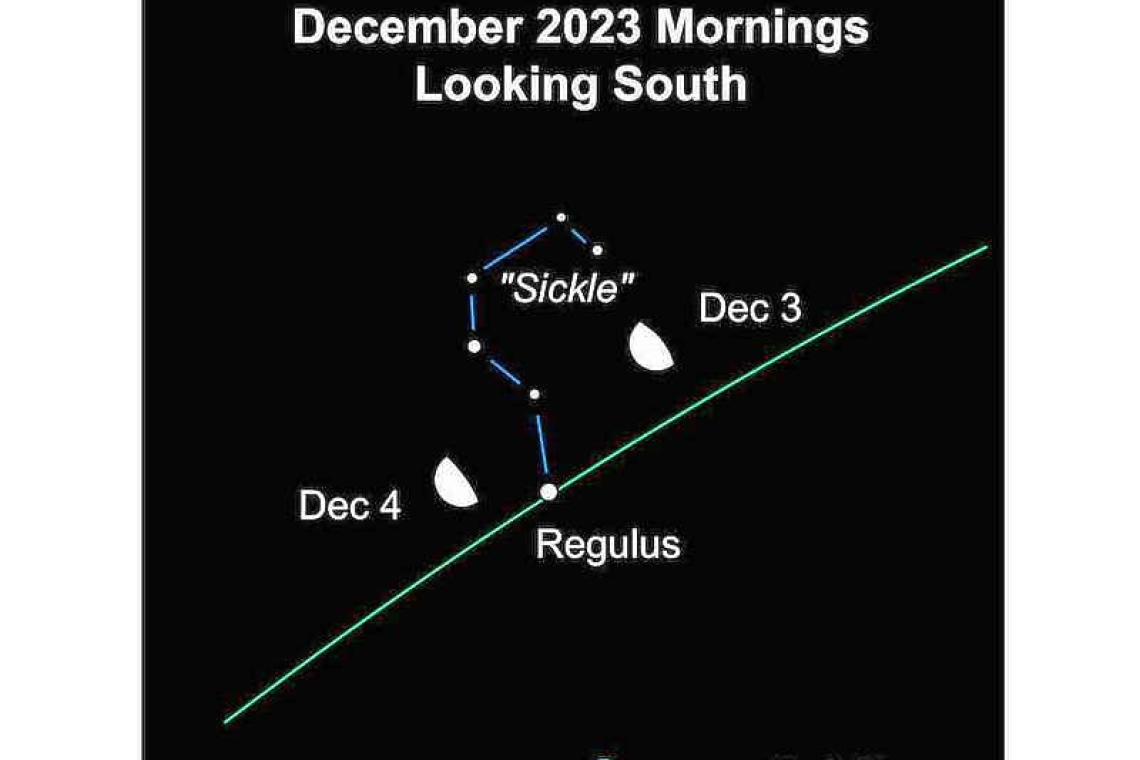~ St. Maarten’s Backyard Astronomy for December 1-3 ~
Sun rises at 6:27am
Sun sets at 5:37pm
Lunar phase: 3rd quarter, waning half moon
Moon sets at 11:00pm
Moon rises at 10:23am
This weekend, look up just after sunset, as the stars pop out in the darkening sky. Do you see four stars marking the corners of a big square just above your head? That should be easy to find, but do you know what constellation that is? It’s Pegasus, the winged horse, also known as the “Great Square”.
Once you have located Pegasus, use this constellation to find two planets. Look eastward a distance of one great square’s width to find the bright planet Jupiter, poised between the constellations of Aries, Pisces and Taurus. Or look southward from Pegasus to find Saturn, sitting within the stars of the constellation Aquarius.
An hour later, as Pegasus drifts towards the west, you will find Taurus rising up, led by the tiny star cluster known as the “Seven Sisters”. This hazy delight is actually called the Pleiades and it is sometimes referred to as a stellar nursery, a place where stars are being created out of dust and gas that coalesce through mutual gravitational attraction. If you have binoculars or a telescope, the Pleiades are well worth focusing on for a few minutes of amazement. The tiny twinklers actually have an arrangement that is similar to the Little Dipper.
Once Taurus is overhead, look towards the east for Orion the Hunter – the classic winter constellation for the Northern Hemisphere. Orion is one of the first constellations many of us star gazers learned, often a beloved childhood memory with a parent or another adult who took the time to take us out to look at the stars. Why not pass the tradition on to the next generation? Those three stars in a row are his belt, and once you show someone that easy-to-find “belt”, they won’t likely forget it.
By midnight, Orion and Taurus are almost overhead and the moon will be climbing up from the eastern horizon. This weekend, the moon is on the cusp between the third and fourth quarters, thus a half-moon shape. You’ll see it slimming down throughout the week, becoming a thin crescent by next Thursday, and disappearing for a few days around next weekend.
When the moon is absent, it’s called the New Moon Phase. If you watch the moon this week, you might see a phenomenon called “the new moon in the arms of the old moon”. The dark part of the sphere is visible, with the bright crescent almost all the way around it. This is the ideal time to get a bit of magnification and study the moon’s topography. Craters stand out as the shadows accentuate the surface texture in great detail. Enjoy!
Thank you for keeping up with the Night Sky articles, backyard astronomy designed for St. Maarten sky viewing. FYI: If you are out later on in the week, note that each star rises about four minutes earlier each day than written here, and the moon rises 50 minutes later. Night Sky is researched and compiled by Lisa Davis-Burnett. Earthsky.org is a key resource for information and images. Questions or comments? Email This email address is being protected from spambots. You need JavaScript enabled to view it.







